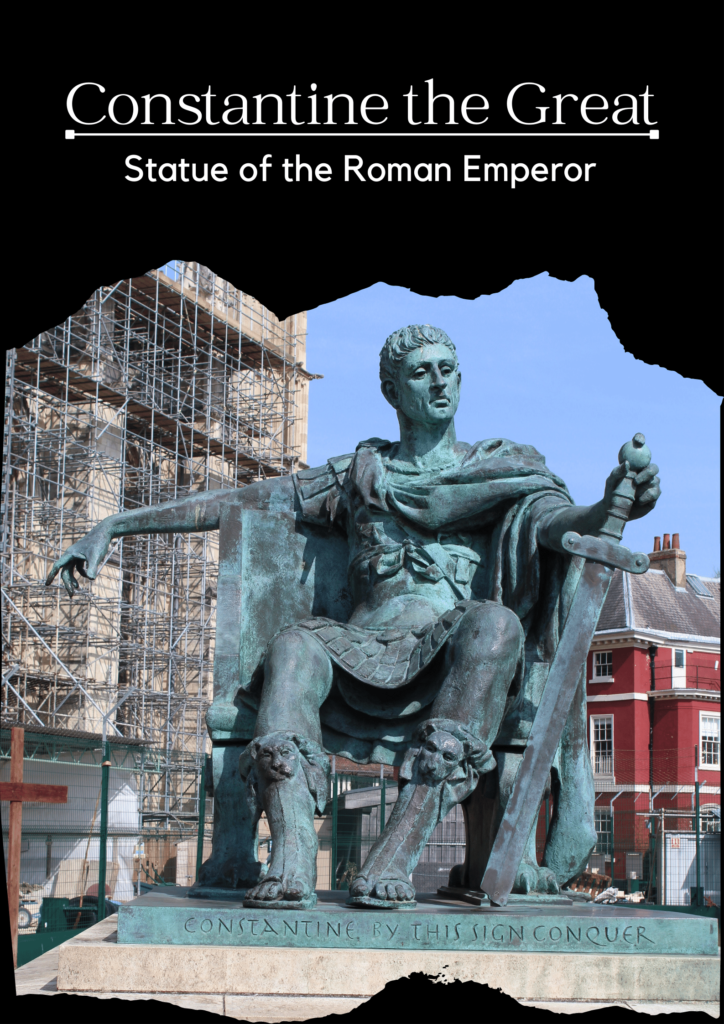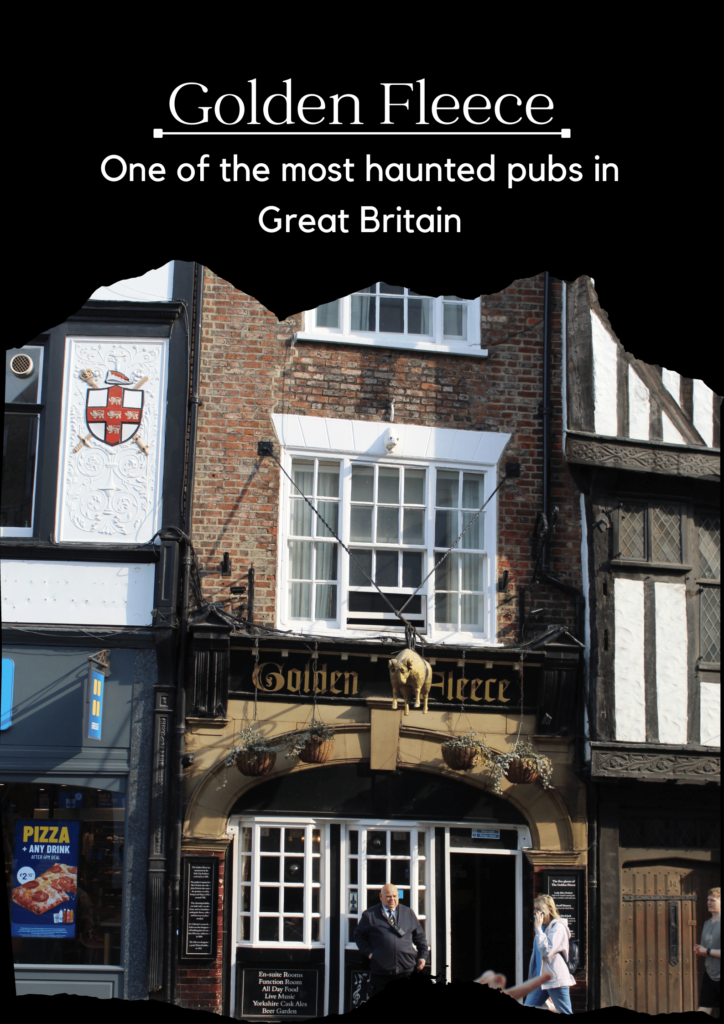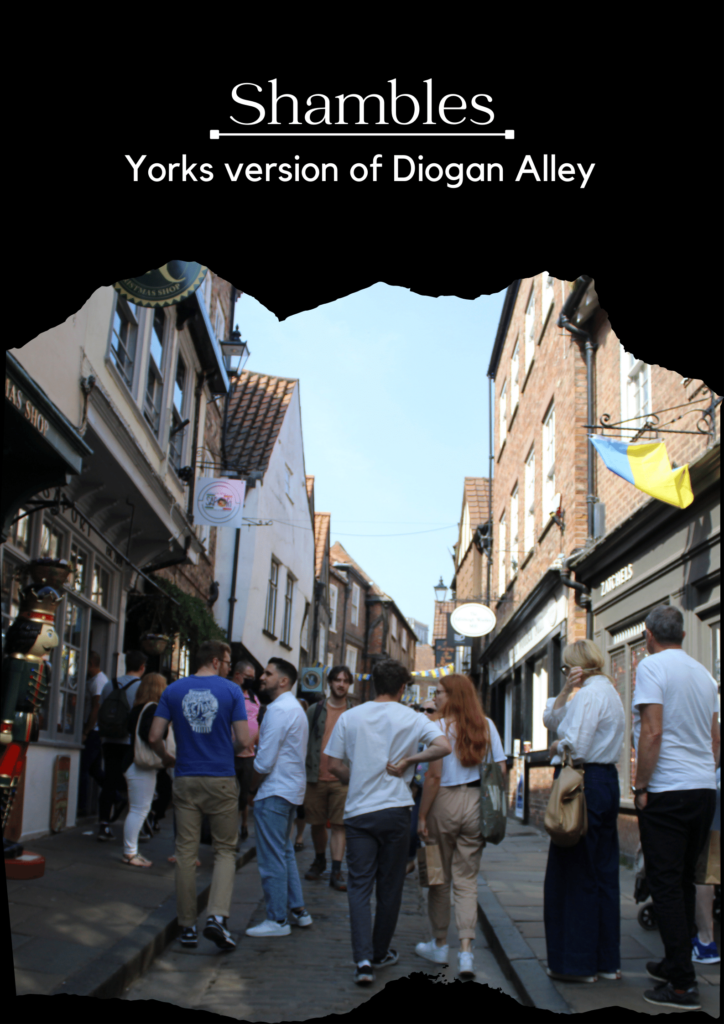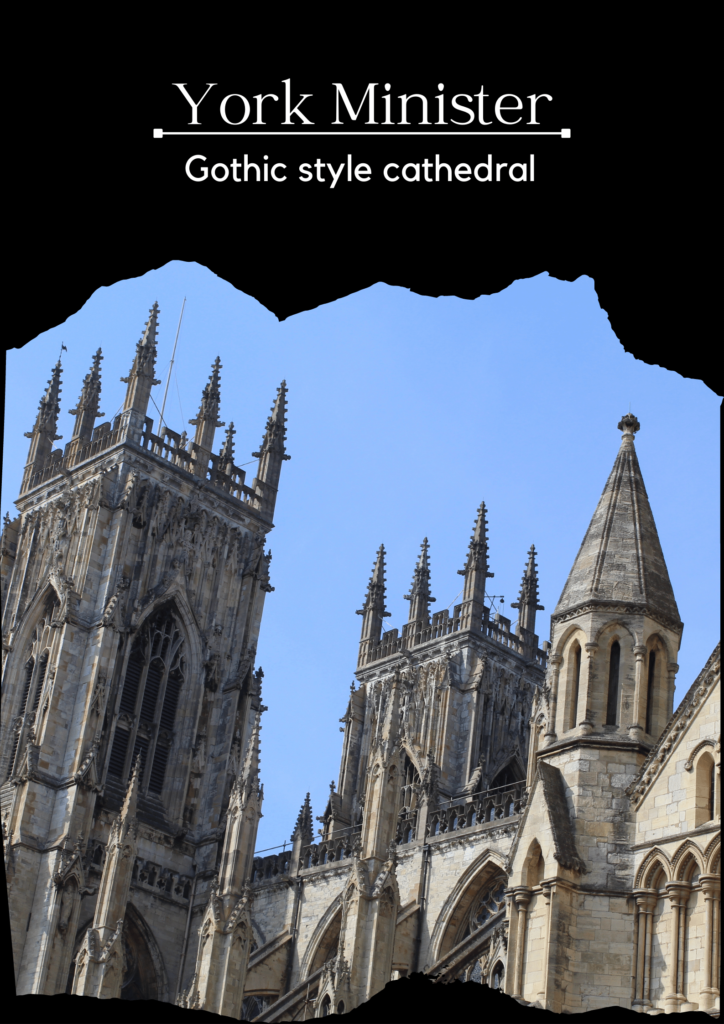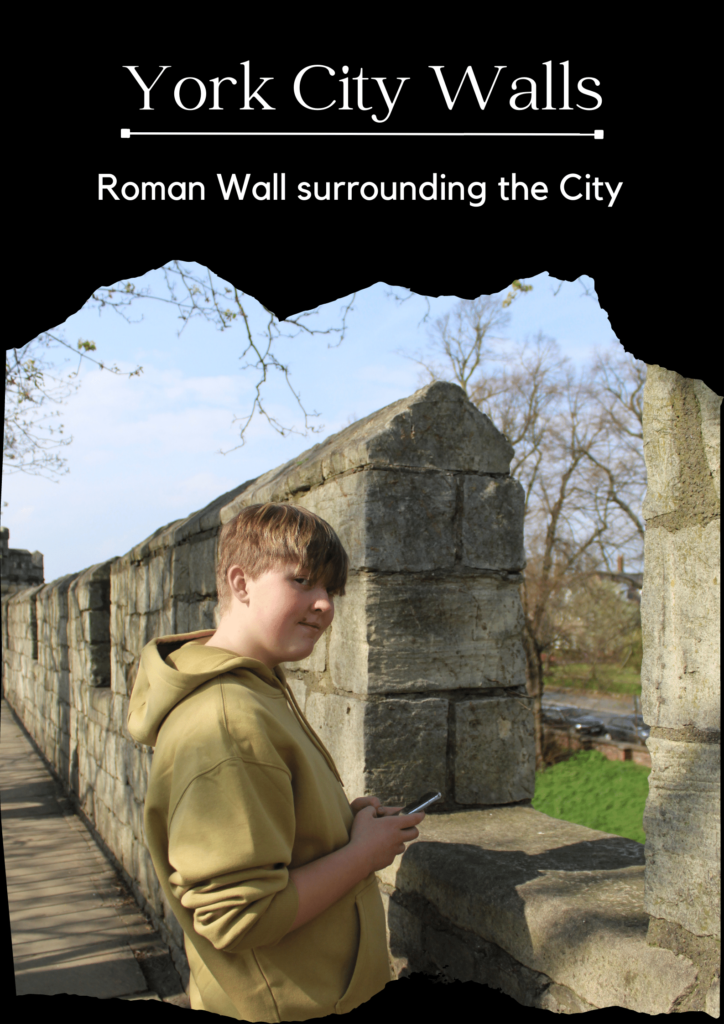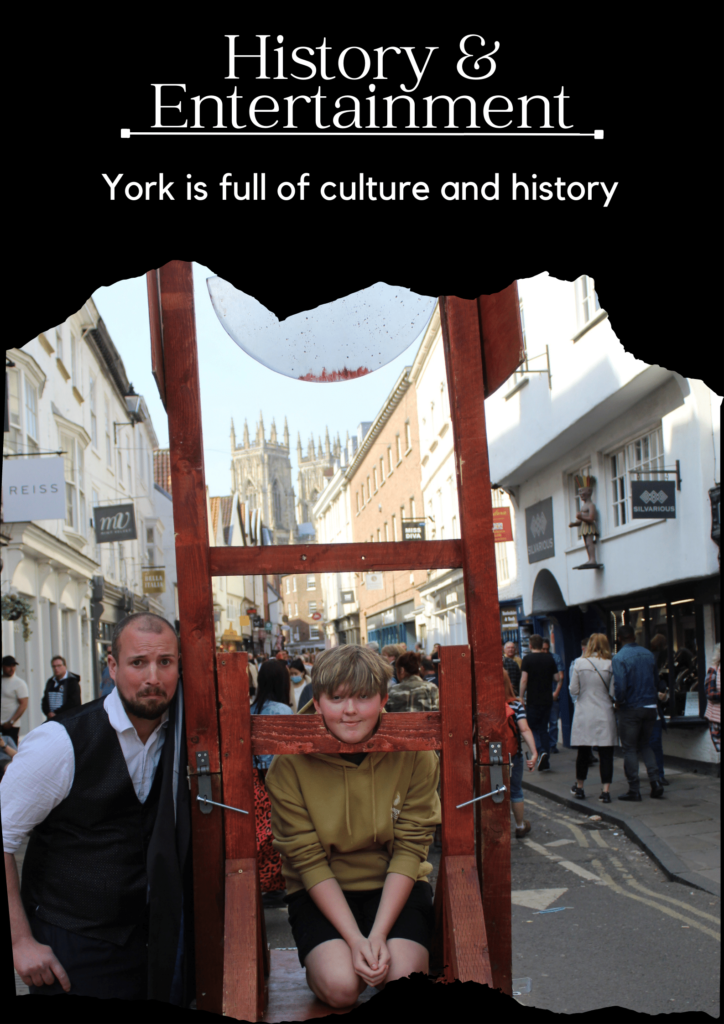York - North Yorkshire
York is a cathedral city in North Yorkshire.
Imagine a City with Roman roots and a Viking past, surrounded by an ancient wall with quirky medieval streets and vibrant shopping and socialising atmosphere.
Unsurprisingly due to York’s turbulent and bloody history, York is a hot spot for paranormal activity and isn’t shy to acknowledge that fact. Known as the “City of a thousand ghosts” there are plenty of walking tours and horror stories to be told if your brave enough!
No matter what time of the year you visit you will be in for an amazing treat.
This page contains affiliate links and I earn a commission if you make a purchase through one of the links, at no cost to you.
History
A couple of weeks ago during the school Easter holidays, we decided on a different kind of day out, somewhere we could go and experience culture and history and York seemed to be the perfect place to do this.
York is one of the oldest City’s in Great Britain and it has a real mixture of everything here as well as a few good ghost stories which my son was eager to find out about as he’s in to the strange and paranormal.
We went on a gorgeous spring day when the sun was beaming down and the temperature was above the norm for this time of year making it pleasent to walk around exploring all the things York has to offer.
Romans
York’s history truly begins with the Romans.
The city was founded in about AD 71 when the 5,000 men of the Ninth Legion marched from Lincoln and set up camp.
Eboracum, as the Romans called York, was born.
The Roman world was governed from wherever the emperor was located. York was priviledged to be the heart of the Roman empire in two periods, about 100 years apart. Remarkably, both times the Emperor died in the city and both times a battle for succession began here.
York’s walls were first built by the Roman’s and some remains such as the Multangular Tower can still be seen today.
Vikings
Viking’s invaded led by Halfdan and Ivar the Boneless, the Viking army attacked on November 1 866. This date may well have been chosen with care. It was All Saints Day, an important festival in York when many of the town’s leaders could have been in the cathedral, making a surprise attack even more effective.
It worked. They took York, although the Northumbrian kings Aelle and Osbert were not captured.
The Viking army spent the winter on the Tyne and had to recapture York in March 867. This was a more violent clash. The Anglo-Saxon Chronicles recorded that there was ‘an excessive slaughter made of the Northumbrians’. Among those killed were Aelle and Osbert
Medieval
For most of the Norman period York, like the rest of Yorkshire, had been governed by the Sheriff. He was based at York Castle, but had responsibility for the whole county and wasn’t accountable to the citizens. This all changed at the beginning of the 13th century.
The Sheriff of Nottingham may have had troubles with outlaws but at least he didn’t have to face York’s business community. As York’s merchants grew richer, they resented the Sheriff of Yorkshire’s dominance. Leading citizens banded together and became an influential voice in the city’s affairs.
It was King John himself who gave them the chance of self-government. Disastrous and expensive military campaigns left him sorely in need of funds, and one way to raise them was to allow a town’s citizens to buy the right to rule themselves. The same pressures forced John in 1215 to sign the Magna Carta, the charter giving some fundamental rights to the nation.
Tudor/Stuart
Richard III had been a friend to York. His defeat by Henry Tudor at the Battle of Bosworth in 1485 was a cause of great concern in an already declining city.
The first Tudor king, Henry VII, visited York within a year of his accession. If the city was to prosper again it was vital that its citizens made a good impression and won his favour. No expense was spared, no eulogy left unsaid in the efforts to win over the first of the Tudor dynasty.
When Henry arrived in 1486 at the York boundary, he was met by York’s sheriffs and two aldermen with 60 horses. He was accompanied from Bilborough Cross by the Mayor and the remaining aldermen in scarlet gowns, the town clerk and council in violet, the chamberlains in mulberry and many citizens in red on horseback.
Victorian
The railways saved York from stagnation. Rail travel was still in its infancy when the first train left York in 1839.
The first inter-city line in the world had been built by George Stephenson only nine years before. Stephenson went on to plan a line from Newcastle to London. Crucially, York’s own railway king, George Hudson, convinced him to build the line through York rather than bypassing it on the way to Leeds. And no one could have predicted the profound effect that this new form of transport would have on the city.
In 1840 the first train ran direct from York to London. By the 1850s, there were 13 trains a day between the two cities, carrying 341,000 passengers a year. In 1877 a new station, the largest in the country, opened to accommodate them. By 1888 there were 294 trains arriving daily.
The impact of the railways on York was dramatic. The stage coaches declined, but much of the rest of the city was rejuvenated. The rail revolution allowed people and products to be transported to and from York faster than ever before. Entrepreneurs were given access to new markets.
Tourism boomed: within two years of the first train steaming into York, excursions to the historic city were arriving from Manchester, Nottingham and London. Theatregoers came from miles around to see productions at the Theatre Royal, rebuilt four times in the 19th century. Two Fine Art and Industrial exhibitions in 1860 and 1879, at York Art Gallery, attracted a total of nearly 870,000 people, demonstrating the new mass mobility of the railway age.
It also revolutionised communications. By the mid-1860s York had two postal deliveries a day; a letter posted in London before noon was delivered in York the same evening. York’s main post office in Lendal was built in 1884.
The railways also brought heavy industry to the city for the first time.
York today
Today York is a vibrant City of festivals, (theres a different festival every month of the year). It has everything from history (boasting 30 world class museums), a thriving cultural scene and magnificent surroundings of the North York Moors and the Yorkshire Dales (Im sure a hit with any Emmerdale fans) you could spend weeks exploring this amazing City.
But we had only 1 day so we tried to fit in what we could.
Our day started by finding a car park space which was difficult as York was packed on the day we went (probably due to it being Easter weekend). After driving up and down and back round Coppergate car park we finally got a space.
We left the carpark through the Coppergate shopping mall and headed into the city centre.
The first thing we noticed was a man dressed in an old undertaker costume with a powder white face and gaunt expression on his face handing out leaflets to join a ghost tour which was on that evening, we were not going to be there that late and I don’t this Bella my 9 year old would of enjoyed it but I can guarantee Cameron would of loved to of done this.
The man was standing at the end of a very old medieval narrow street with cobble stone paving and old timber framed terraced houses that were all crooked, which reminded me of Diagon Alley from the Harry Potter movies. Funnily enough the first shop on the right hand side was called “The shop that can not be named” and was full to the brim of Harry Potter items and had a queue reaching all around the side of the shop down a small alley that leads onto the Shambles Market.
This whole street was brimming with different kinds of gift shops from Vikings to London themed. There were so many people down this little funny wonky looking street it was bursting at its seems.
Shambles
The first thing we noticed was a man dressed in an old undertaker costume with a powder white face and gaunt expression on his face handing out leaflets to join a ghost tour which was on that evening, we were not going to be there that late and I don’t this Bella my 9 year old would of enjoyed it but I can guarantee Cameron would of loved to of done this.
The man was standing at the end of a very old medieval narrow street with cobble stone paving and old timber framed terraced houses that were all crooked, which reminded me of Diagon Alley from the Harry Potter movies. (If you are a Potter fan check out my other blog about Harry Potter Studio tour).
Funnily enough the first shop on the right hand side was called “The shop that can not be named” and was full to the brim of Harry Potter items and had a queue reaching all around the side of the shop down a small alley that leads onto the Shambles Market.
This whole street was brimming with different kinds of gift shops from Vikings to London themed. There were so many people down this little funny wonky looking street it was bursting at its seems.
Shambles Market
Once we got to the bottom of the Shambles street we turned left to the Shambles Market. This is a large open air market with hundreds of little stores. One half seemed to be Artisan goods and the other side was a general market selling clothes and things you would normally see in a standard market. We had a good explore around all the stalls to see what they had for sales. There was a stall selling fresh candyfloss which they mould into different animals using a variety of colours, they were absolutly massive when they finished making them on the stick and looked impressive.
York Minister Cathedral
We then decided to go and see a historic landmark, The York Minister Cathedral. I .find old gothic buildings fascinating so couldn’t wait to get my camera out and get some snaps of this magnificent building. The detail in the structure and décor of this Cathedral is incredible and well worth visiting to see it.
At the front is a bronze statue of Constantine the Great,
It commemorates the accession of Constantine as Roman Emperor in AD 306 on this site, after the death of his father Constantius Chlorus in York.
At the rear of the Cathedral you will find beautiful landscaped gardens perfect for sitting on under the cherry blossom tree’s in the warmer months to relax whilst surrounded by amazing scenery.
York City Walls
As we wondered through the streets we saw an old church style door into the City Walls, We had seen other people go in and up the steep narrow steps and we decided to follow.
At the top of the steps we were on the path of the City Walls which took us on a walk around the outskirts of the City centre. We could see the Cathedral gardens and there was a wedding party in the garden of one of the buildings behind the Cathedral which looked like they were all having the best day with the sun still beaming down on the beautiful newly weds.
As the wall turns there is a area to sit, which after all the walking we had done already we thought we would have a small break and give our feet a rest while enjoying the view.
We sat there for 5 -10 minutes and when we were ready we carried on around the other side of the wall which then leads back down some more stone steps and onto the street.
York Castle Museum Gardens
Perfectly landscaped gardens full of flora and fauna, the botanical gardens of York Caste museum are stunning especially in spring when you can see flower beds full of beautiful tulips along side the historic remains of St Mary’s Abbey.
On the day that we went there was a showcase of different Owls and birds of prey with people giving educational talks about the different species.
So much more we wanted to see
But it was time for us to leave sadly. We had spent a good few hours walking around and exploring and loved every minute of it. The kids were getting tired though so we decided to head back to the car for the drive home.
We didn’t go to York with a plan in place of where we wanted to visit as it was just a random trip out but with a bit more planning you could probably fit more in, or better still maybe stay over and make a weekend out of it.
I think we will be going back to do the ghost story events at some point as my son really wanted to do that (can’t say I’ll be as eager as I’m a bit of a wimp when it comes to that kind of thing lol).
One of which will be the Dark Chronicles of York which is a a very different kind of walking tour to be attempted only by the bravest and most intrepid of explorers. Let us take you on a journey through Yorks darkest secrets, 2000 years of terrifying history.
You can find out more about Dark Chronicles Horror walk of York on their Facebook page here – The Dark Chronicles
They hold different events every month so there will always be something new to see and do each time you visit.
A good website to find out information from is VISIT YORK which will tell you what events are on all year round.

